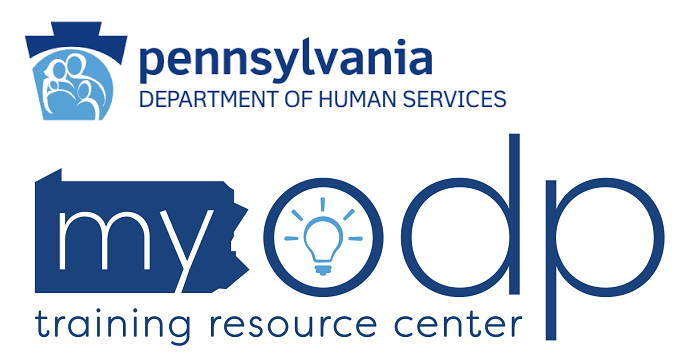Positive Approaches Journal, Volume 8, Issue 2
Neuville | 22-28

Volume 8 ► Issue 2 ► 2019
The Gift that Keeps on Giving: Social Role Valorization as a Framework for Designing Good Supports
Elizabeth P. Neuville
Abstract
Despite many years of operating community-based programs with the intention to assist people with disability to have full, rich meaningful lives, some of the biggest hoped-far gains, such as an end to degradation, isolation, and rejection, and a full
welcome to people with disability to share everyday lives with other citizens, have eluded us. This paper outlines the basics of Social Role Valorization as a well-seasoned framework and offers encouragement to adopt and adapt its principles to help
services better deliver on their promises to the people they serve. In summary, positive behavior support is an evolving practice that integrates person-centered values with behaviorally based scientific practices and other theoretical orientations
to address the comprehensive needs of individuals with developmental disabilities. At the heart of positive behavior support is the person we are seeking to support. Our allegiance is to that person, requiring us to be person-centered while drawing
from the most effective approaches science and our collective professional wisdom has to offer.
Background
In nearly five decades since Dr. Wolf Wolfensberger published The Principle of Normalization, a transformative idea set which sparked the community movement, at least for people with developmental disability, in North America, parts of Europe, and Australasia. At the time, the brutal conditions in the large-scale institutions, such as euphemistically named state schools, state centers, and state hospitals were revealed for all to see, thanks to intrepid change agents like Burton Blatt, Bill Baldini, and many others who captured and described the conditions. Images of the realities of the institution came into our living rooms and forced us to see “man’s inhumanity to man.”1 Although it was obvious that what was happening in those places of despair was, quite simply, wrong, it was hard to discern what should be for people. In other words, what would be right? Normalization provided the first clear guidance on this, and across the western world, it was seen as the spark that was needed to fuel the creation of a community system. The key idea, simple yet elegant, was that people who are marginalized and devalued should have life conditions that are at least as good as those of typical citizens. There was great hope that what would be created for people with disability – typical residences, valued work options, full integration, and full lives - would stand in sharp contrast to years of segregation, mistreatment and neglect.
However, as the community system was constructed across the United States, it became clear to those developing and using Normalization that deep social devaluation, oppression and segregation was continuing in more subtle and hard-to-see ways, even in more typical settings like group homes and supported living models. The institutions were improved, no doubt, and yet the essence of segregated institutions – places of purposeless life-wasting- held on, and the institutions, in their appearance, became much more palatable to everyday people. One might say that we put curtains on the institutions, and it became harder to recognize the nature of the beast. In many ways, the hoped-for changes towards a community system of support had eluded us. For these and other reasons, in the 1980s, Normalization was re-conceptualized into Social Role Valorization (SRV), a more deeply nuanced set of ideas which was built on top of Normalization, with many powerful components.2
A Refresher on Social Role Valorization
Social Role Valorization (SRV) is based on a framework of understanding how people come to be at the bottom of the social ladder, and what really works in people’s lives to lift them out of this social devaluation. The central strategy is to assist people who have had very negative societal roles – such as burden, eternal child, menace, sick, ‘better off dead’, human service client, object of ridicule to name a few – instead be assisted to move toward valued roles, like citizen, taxpayer, neighbor, big brother, student, employee, homeowner, amateur artist, club member. These valued roles carry great weight for all people, as they are the means through which all people gain access to really important things like acceptance, belonging, a good reputation, a strong self-image, opportunities, and a full, rich life.3 Services which support and assist people to have valued social roles as a focus point seem to be the ones which provide the greatest well-being to the people they serve.
Unfortunately, most services, in these enlightened days, seem to focus on activities in and of themselves, rather than crafting a vision of valued roles for each person they support, individually, then moving towards that vision by enabling activities which are directly related to the development of valued roles. SRV offers a fundamentally different understanding. Competency development is one way to build towards valued roles – for example, assisting someone to be in the role of fisherman or woman involves learning at least some of the skills needed to fish, but also involves helping someone to have the image of the role – by having the equipment, the license displayed, the right clothing, and many subtle and obvious cues, not to mention all of the people that a fisherman or woman would typically interact with. Much more remains to be said about valued roles, their benefits, and how to support people with disability to grow into them successfully, but a deeper study of SRV can be pursued elsewhere. In science, SRV would be said to be an elegant theory, meaning that it is a simple concept from which many, many corollaries and aspects can be drawn. Indeed, SRV is not a method, there is no checklist, no workbook, and no ‘package.’
An organization does not “do” SRV – but if used as a foundation, it seems that whatever methods an organization uses can be done better, deeper, more fully, and with more positive benefit if laid on a strong foundation of SRV, provided the method has
relevance and potency in and of itself, and does not cause harm to people.4 For example, it seems that the practices of positive approaches, or person-centered planning, or applied behavioral analysis, or any other number of practices
can be done with more depth, sensitivity, equity, responsibility, and success if the practitioner understands what SRV has to teach us. Understanding the important SRV frameworks such as the existential wound of segregation and rejection, the power
of the physical environment in shaping behavior, the importance of valued societal participation, allow practitioners deep insight into the most powerful determinants of how people come to experience belonging and acceptance. For instance, inclusive
education will be, quite simply, more inclusive and successful with an understanding of the power of imitation and modeling and role expectancies offered by SRV theory. Helping people have freely-given relationships, much talked about in our field,
actually has a fighting chance if SRV is understood and used.5 SRV often appears to help practitioners, families, advocates, and everyday citizens see more keenly the experiences that people with disability have borne, identify more closely
with such people, and work more fruitfully towards better futures.
A Gem of a Concept
One practical, powerful, and useful concept developed and described in SRV is the concept of the Culturally Valued Analogue (CVA), which is defined as a societal practice that is used with frequency, with which most people would be familiar, and most people would think well of.6,7 This simply means that, whenever a strategy is required to support a person, a first and foremost question should be asked, “What happens for typical people with a valued status?” If this question is asked and answered, the next question can be, “Can we start with that?”
A simple illustrative example is learning to ride a horse. When this seems like something someone served might be interested in, service workers often leap to offering therapeutic riding activities designed for groups of people with disability. They exist everywhere these days and are often free. However, SRV theory teaches to first ask the question about how horseback riding, or the role of horseback rider (to put it in role terms) happens for typical people. Well, there are many ways that typical people might do this, or enter this role – take riding lessons, find a friend who has a horse, take a guided trail ride, purchase a horse, lease a horse, join a program at a local riding stable- you will notice that none of these include getting horseback riding therapy. Yes, a person might need support and adaptations to ride a horse, and these can be provided while not straying too far from the natural pathways. And yet, it is much easier to pursue segregated, medicalized horseback riding, despite the fact that it relegates horseback riding, an enjoyable sport that is done for its own sake, as a means to fix or treat people. In fact, that is a good way to think about the CVA – it is exploring the natural pathways that already exist in society.
Program vs Home
For those who design and operate residential services, the CVA offers exceptional guidance in creating environments that are truly home. And that is a helpful thing to remember – the CVA for a residential program is, in fact, home. Home is an incredibly
powerful driver of the quality and richness of life for most valued citizens, and that, in fact, many people exert a great deal of effort in creating for themselves. For many people with a disability, the loss of home has been one of innumerable losses,
particularly for people who have been institutionalized, or who have been in the revolving door of mental health programs, where people cycle in and out of many different residential services, single-room occupancies, living on the streets, prison,
and hospitals.
If planners and workers simply spend time discussing and laying out the qualities and characteristics of a valued home, one that most people would aspire to, yearn for and pursue, that is an excellent and worthy way to put the CVA to use as the basic
foundation of what the service is providing. Adaptations can be made from there. These adaptations need to be made to account for individual needs, and this is a part of making the service relevant and tailored to each person who lives in the home.
However, violations of the CVA should be monitored carefully, as service quality degradation can easily happen when the CVA is not guarded.
For example, practices which are put in place to protect the well-being of a person, such as locked areas, alarms, video monitoring, may be extended for years well past their purported need. Or the home may become full of indicators that this is a program,
such as the open presence of files, instructive signs, medical devices, notebooks, staff offices, workplace notifications, and many more. It is always an excellent idea to walk through residential homes from outside to inside looking for any and all
indicators that, in fact, this is a human service program rather than a home. Then, one can try to minimize these features. My colleague Darcy Elks has referred to these ‘service land’ feature as the “fingerprints of the organization,” and they are
best avoided. Use of the CVA calls into question many current practices popular in many human services, which clearly violate cultural norms, and should cause us to take up “studying the ordinary,” as my colleague Tom Doody says, as a good way
to rethink some of these practices.
SRV remains, after over 40 years of experience in use here and there across the world, a powerful way to understand the experience of living with a devalued status within society and offers a rich collection of strategies which make good sense to help
uplift people towards better lives. It is helpful in designing and structuring human services, as well as individually supporting people to live lives embedded in the best of community. Although Social Role Valorization concepts are not always easy
to implement, it seems there are no shortcuts to building community around people and using what we know about how society behaves to benefit those who may need it most. Social Role Valorization, over the years, continues to provide such valuable
guidance to those trying to do best by the people they serve, and truly functions as a gift that keeps giving.
References
-
Burns, Robert. The poetical works of Robert Burns. JB Lippincott & Company, 1868.
-
Wolfensberger,W. Social role valorization: A proposed new term for the principle of normalization. Intellectual and developmental disabilities. 2011; 49.6: 435-440.
-
Osburn, J. An overview of social role valorization theory. The SRV Journal. 2006 1.1: 4-13.
-
O'Brien, J. Celebrating the genius of Wolf Wolfensberger. Research and Practice for Persons with Severe Disabilities.2011; 36.1-2: 76-79.
-
Lemay, R. Social role valorization insights into the social integration conundrum. Mental Retardation. 2006; 44.1: 1-12.
-
Wolfensberger, W. & Thomas, S. PASSING: A tool for analyzing service quality according to Social Role Valorization criteria. Ratings manual. (3rd rev.ed.). Syracuse, NY: Syracuse University Training Institute for Human Service Planning, Leadership & Change Agentry.
-
Barken, Emma. "Almost, but not quite there: Failing to fully develop culturally valued analogues." The SRV Journal. 2010; 5.1: 14-20.




